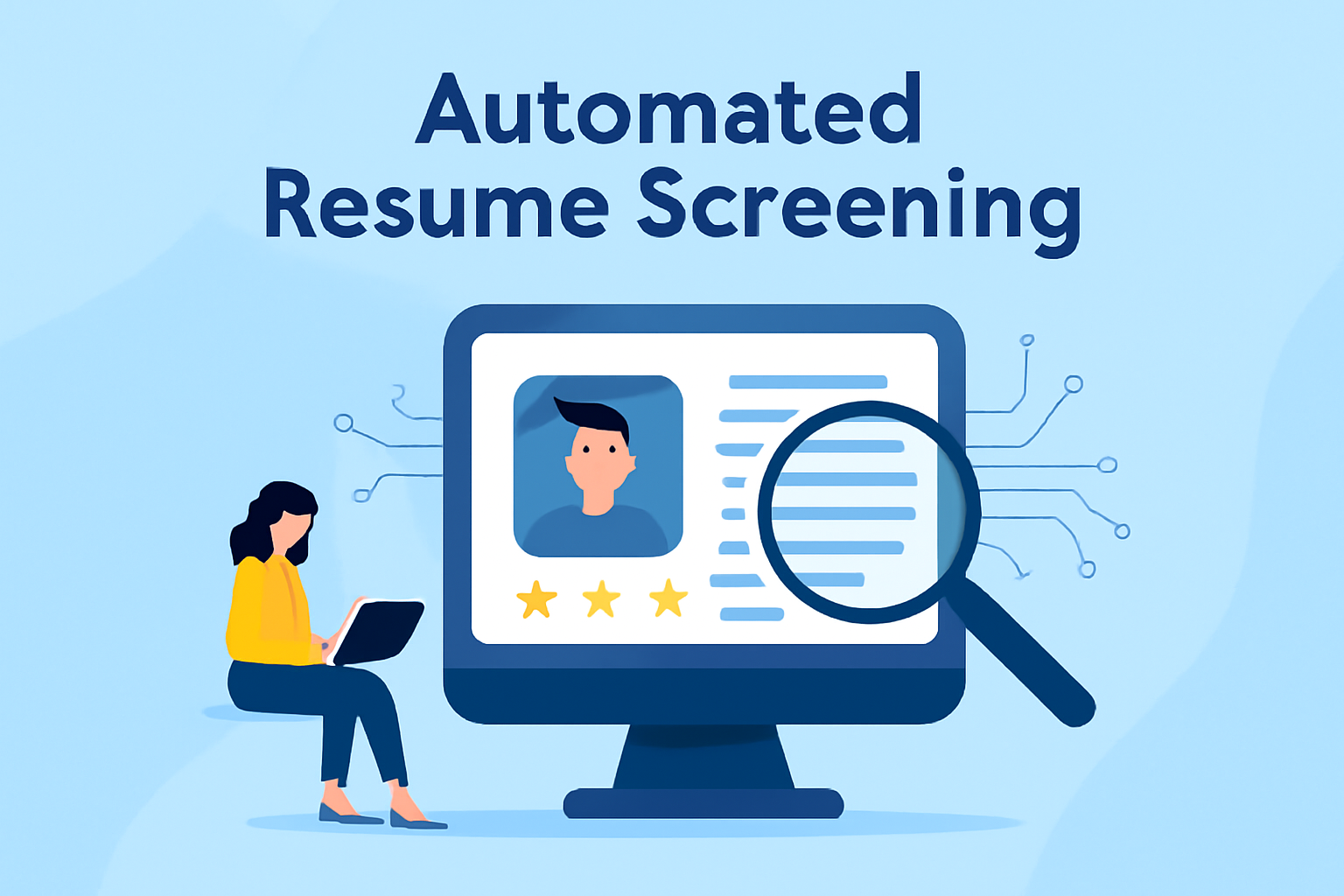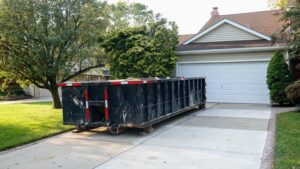Automated Resume Screening: Enhancing Recruitment Efficiency in 2025
Automated Resume Screening
Recruiting is one of the most critical processes for any organization, and in today’s fast-paced, competitive job market, efficiency and speed are paramount. Manual resume screening is time-consuming and often inefficient, especially when dealing with large volumes of applications. This is where automated resume screening comes into play. In 2025, organizations are turning to AI-powered solutions to streamline their hiring process, save time, and improve the quality of candidate selection.
This blog will delve into the world of automated resume screening, exploring how it works, the benefits it brings to recruitment, and why it’s an essential tool for recruiters in 2025. Additionally, we’ll answer some frequently asked questions and give you insights into the top automated resume screening tools available today.
For those looking to learn more about AI-powered resume screening, be sure to visit our AI-powered resume screening solution for detailed insights.
What Is Automated Resume Screening?
Automated resume screening is the process of using Artificial Intelligence (AI) and Machine Learning (ML) technologies to scan and evaluate resumes automatically. Unlike traditional methods where recruiters manually review resumes, automated systems can quickly parse through resumes, extract relevant data, and match candidates to job descriptions.
The primary goal of this technology is to reduce the workload on HR teams and increase the efficiency of the recruitment process. By automating the resume screening process, recruiters can quickly shortlist the most relevant candidates and focus on higher-value tasks like interviewing and engaging with candidates.
The Evolution of Resume Screening
In the past, manual resume screening was the norm. Recruiters and hiring managers would spend hours or even days reviewing each resume individually, a process that was not only time-consuming but also prone to errors and biases. Fast forward to today, and the recruitment industry has embraced automation.
In 2025, AI-powered resume screening is the future of recruitment. The shift to automation began in the late 2010s with the development of Applicant Tracking Systems (ATS) that helped manage resumes. However, these systems were still limited in their ability to truly assess candidates based on the content of their resumes. Automated resume screening powered by AI now offers a much more robust solution by not only scanning resumes for keywords but also understanding the context and relevance of the information provided.
How Automated Resume Screening Works
1. Optical Character Recognition (OCR)
OCR technology is used to scan resumes in different formats such as PDF, DOCX, or even image-based resumes. OCR converts text into machine-readable data, allowing the resume screening software to extract relevant information such as a candidate’s name, work experience, skills, and education.
2. Natural Language Processing (NLP)
Once the text is extracted, Natural Language Processing (NLP) is used to understand the context of the data. For example, NLP can distinguish between a job title like “Software Engineer” and a company name like “Google.” It ensures that the system accurately categorizes and processes candidate data, making it possible for the software to match the candidate’s experience and skills with job requirements.
3. Machine Learning (ML) for Improved Accuracy
As the software processes more resumes, it learns from the data and continually improves its accuracy. Machine Learning (ML) helps the system refine its algorithms based on historical data, adapting to the unique needs of each hiring process and job description.
4. Candidate Ranking and Shortlisting
After the resume is processed and parsed, the software ranks candidates based on how well their qualifications match the job requirements. It uses semantic analysis and keyword matching to determine which resumes are the most relevant, helping recruiters quickly identify top candidates.
The Benefits of Automated Resume Screening
1. Time and Cost Efficiency
One of the most significant advantages of automated resume screening is the time and cost savings it provides. According to a 2025 LinkedIn report, recruiters spend an average of 10 hours per week screening resumes manually. By automating this process, organizations can save up to 75% of this time, reducing hiring costs and improving overall productivity.
With automated resume screening, recruiters can focus on engaging with candidates rather than sorting through piles of resumes. This leads to faster hires, reducing the time-to-hire by as much as 40%, as noted in Forrester’s 2025 HR Tech Insights report.
2. Improved Candidate Quality
AI-powered resume screening ensures that only the most qualified candidates are shortlisted, improving the overall quality of candidates moving forward in the hiring process. With semantic analysis and machine learning capabilities, the software can evaluate resumes more accurately and identify candidates with the best fit for the job.
By automating resume screening, recruiters can also eliminate human error and prevent qualified candidates from being overlooked due to unconscious bias or inconsistent resume evaluation methods.
3. Enhanced Diversity and Reduced Bias
Automated resume screening can help mitigate bias in the recruitment process. AI algorithms focus on the skills and qualifications outlined in a resume, rather than subjective factors such as gender, ethnicity, or educational background, which can lead to unconscious bias in manual screening.
By standardizing the evaluation process, AI-powered resume screening ensures that all candidates are assessed fairly based on relevant qualifications, fostering a more diverse and inclusive workforce.
4. Scalability
Automated resume screening tools are highly scalable, making them ideal for large enterprises and small businesses alike. Whether you’re hiring for one position or managing hundreds of job openings, automated systems can handle large volumes of resumes quickly and efficiently, adapting to your needs as your recruitment efforts grow.
Challenges and Considerations
While automated resume screening offers many advantages, there are some challenges to consider:
1. Over-Reliance on Keywords
Automated systems rely heavily on keywords to match resumes with job descriptions. However, candidates who don’t use the exact keywords in their resumes might be overlooked, even if they possess the relevant skills and experience. To combat this, it’s important for organizations to fine-tune their resume screening algorithms and incorporate more sophisticated AI techniques like semantic analysis and contextual understanding.
2. Handling Non-Traditional Resumes
Creative candidates often submit non-traditional resumes, such as video or graphic resumes, which may not be fully compatible with traditional resume screening software. Organizations should ensure that their resume screening tools can handle a variety of formats, including resumes with images, charts, or other non-textual elements.
3. Transparency and Fairness
Ensuring transparency and fairness in AI algorithms is crucial. Recruiters must ensure that automated systems are not unintentionally perpetuating bias, and that they can explain how the algorithms make decisions. Transparency in how these systems work will help maintain fairness and trust in the hiring process.
Frequently Asked Questions About Automated Resume Screening
1. How Accurate Are Automated Resume Screening Tools?
Modern automated resume screening tools, such as those powered by AI and machine learning, can achieve high accuracy rates—often exceeding 95%. However, the accuracy of these tools can vary depending on the quality of the resume data and the complexity of the job description.
2. Can Automated Resume Screening Handle Non-Standard Resume Formats?
While traditional resume screening tools might struggle with non-standard formats, newer AI-powered tools are more capable of processing diverse resume formats. However, non-textual resumes (e.g., videos, infographics) might still require specialized systems.
3. Are Automated Resume Screening Tools Suitable for Small Businesses?
Yes, automated resume screening tools are suitable for small businesses as well. Many providers, including RChilli, offer affordable, scalable solutions that can meet the needs of small teams, making it easier for them to efficiently screen resumes without the need for additional HR resources.
4. What Are the Costs of Automated Resume Screening Tools?
The cost of automated resume screening software varies based on features, the volume of resumes processed, and the number of integrations required. Many companies offer flexible pricing plans to accommodate small to large enterprises.
5. How Can Job Seekers Optimize Their Resumes for Automated Screening?
Job seekers can optimize their resumes by using standard headings (e.g., “Work Experience,” “Education”), avoiding graphics-heavy designs, and including relevant keywords that align with the job description.
Conclusion
As we move into 2025, automated resume screening is no longer a luxury—it’s a necessity for any organization looking to streamline their hiring process. By leveraging AI and machine learning technologies, recruiters can save time, reduce hiring costs, and make more informed, unbiased decisions. Whether you’re a global enterprise or a small business, adopting automated resume screening will enhance your recruitment process and ensure that you remain competitive in today’s talent-driven market.
To learn more about how AI-powered resume screening solutions can transform your hiring process, check out RChilli AI-powered resume screening solution.













